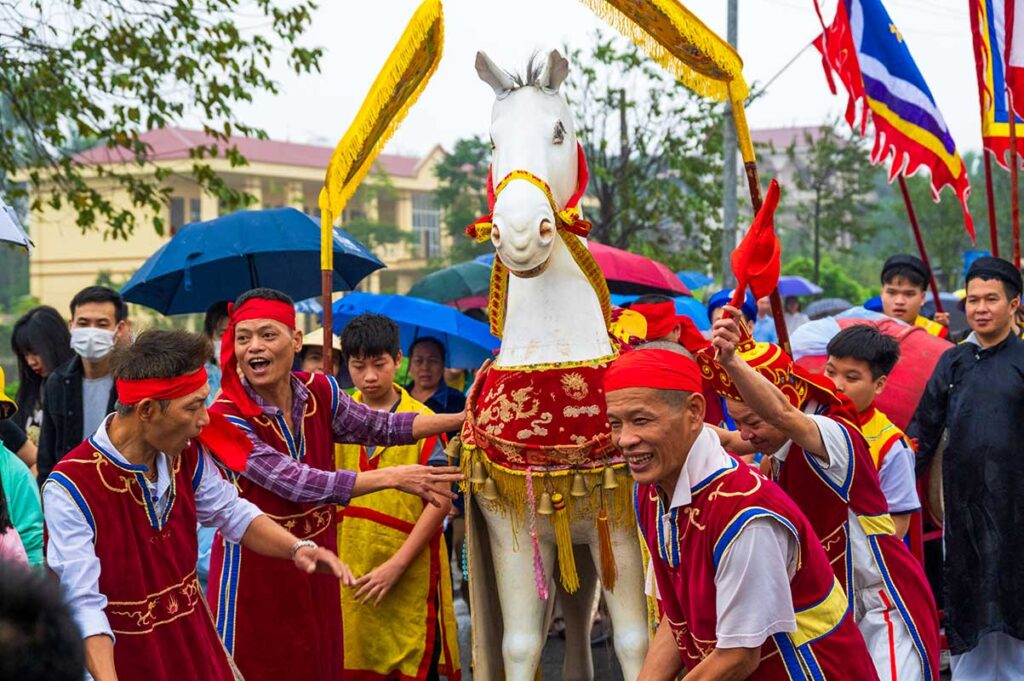What is the Lim Festival?
The Lim Festival is a traditional celebration that takes place every spring in Bac Ninh Province, about 20 km from Hanoi. It is best known for Quan Ho singing, a unique style of Vietnamese folk music performed in pairs by men and women. Alongside the singing, the festival includes folk games, colorful costumes, local food, and traditional rituals.
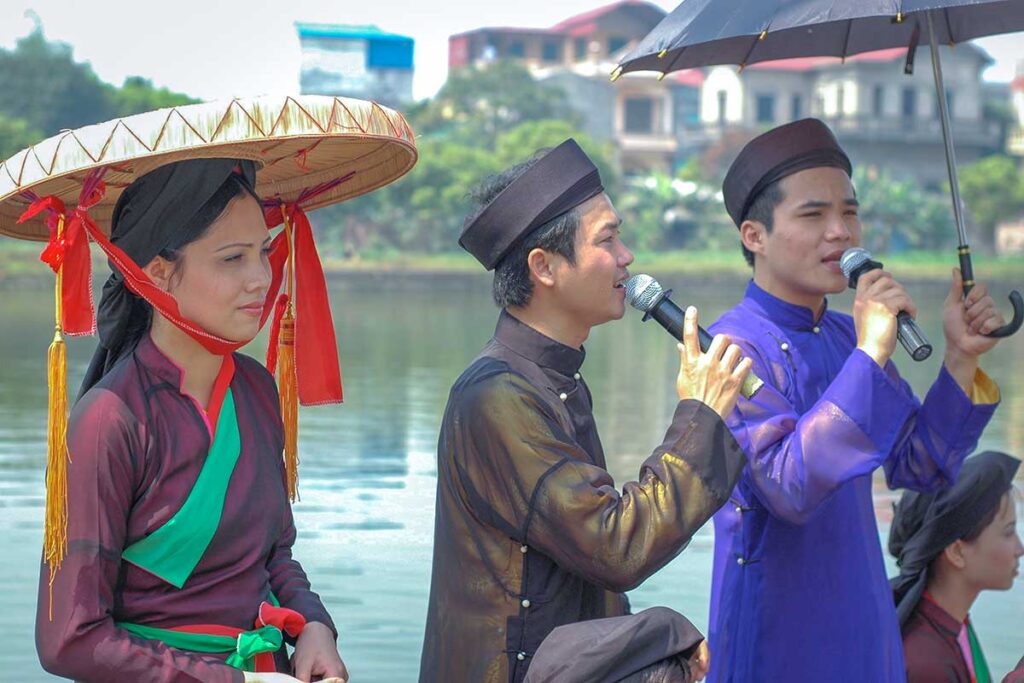
Quan Ho singing is more than just music — it’s a kind of musical conversation, where one group sings a verse and another group replies with a matching melody. Performers dress in traditional outfits: men wear long tunics and carry umbrellas, while women wear flowing dresses and large flat hats. The songs are often about love, friendship, or daily life, and they are performed on hillsides, in pagoda courtyards, and even on boats.
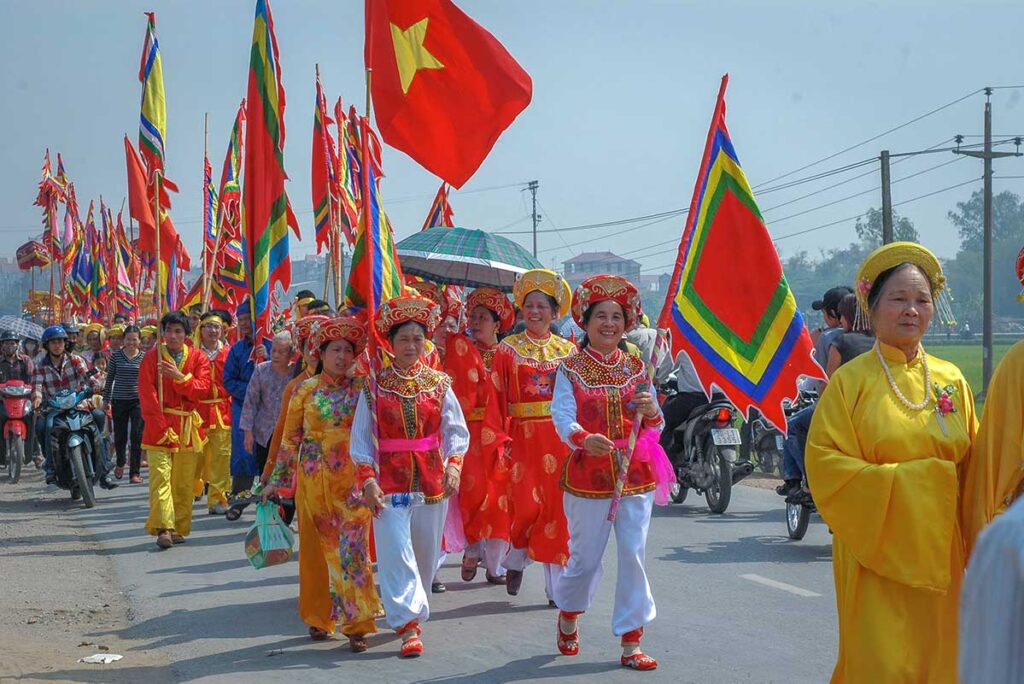
In 2009, UNESCO recognized Quan Ho singing as an Intangible Cultural Heritage of Humanity, helping to preserve this special tradition.
The Lim Festival is considered one of the most famous spring festivals in Vietnam, but it’s mostly attended by local people and those interested in Vietnamese culture. It’s not a touristy event in the usual sense — there are no signs in English or organized shows. But for travelers who are curious about authentic traditions and don’t mind a bit of chaos, it offers a unique cultural experience.
History & Origins
The Lim Festival has a long history, deeply connected to the culture of northern Vietnam and the tradition of Quan Ho singing. According to local stories, Quan Ho began as a way for men and women from nearby villages to sing back and forth during gatherings, festivals, or even while working in the fields. Over time, this turned into a more formal style of folk music that became part of community celebrations.
The festival itself became more organized in the 18th century, thanks to a local official named Nguyen Dinh Dien. He helped rebuild temples and promoted traditional customs, including singing festivals. He also played a key role in turning local celebrations into a larger festival for the whole region.
Originally, the Lim Festival was held in autumn, but it later moved to the first lunar month (Spring) to become part of Vietnam’s series of early-year festivals. Today, it is celebrated around Lim Hill and nearby villages in Tien Du District, Bac Ninh. The area is home to many important sites, including Lim Pagoda, which honors figures connected to the history of Quan Ho and the festival itself.
When and Where does it take place?
The Lim Festival takes place every year in early spring, around the 12th to 14th day of the first lunar month (usually in February). The main festival day is the 13th, when most of the singing, processions, and traditional games happen.
- 2026: February 13th,
The festival is held on and around Lim Hill, located in Tien Du District, Bac Ninh Province — just about 20 km from Hanoi. This makes it possible to visit as a day trip from the capital, although transport can be busy on the main day.
There are several key festival zones:
- Lim Hill – the central area for ceremonies and Quan Ho performances
- Lim Pagoda – where locals offer incense and honor historical figures
- Nearby village courtyards and communal houses – where folk games, weaving contests, and informal singing often take place
While the event spreads across a few locations, everything is within walking distance once you arrive at the festival site.
Main Highlights of Lim Festival
The Lim Festival combines music, rituals, games, and local culture into a lively outdoor event. These are the main things you can see and experience during your visit:
1. Quan Ho Singing Performances
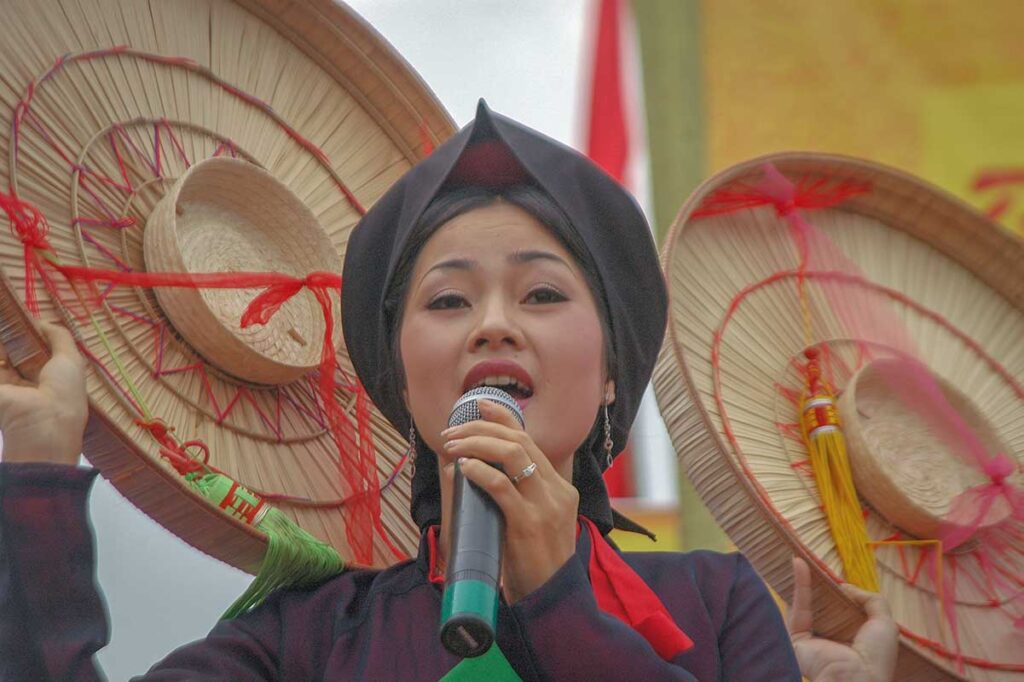
Quan Ho is a unique style of folk singing from northern Vietnam. It’s performed as a call-and-response duet between men and women, often sung in poetic language with gentle melodies. The songs are usually about friendship, love, or nature, and each side takes turns singing verses that match or challenge the other.
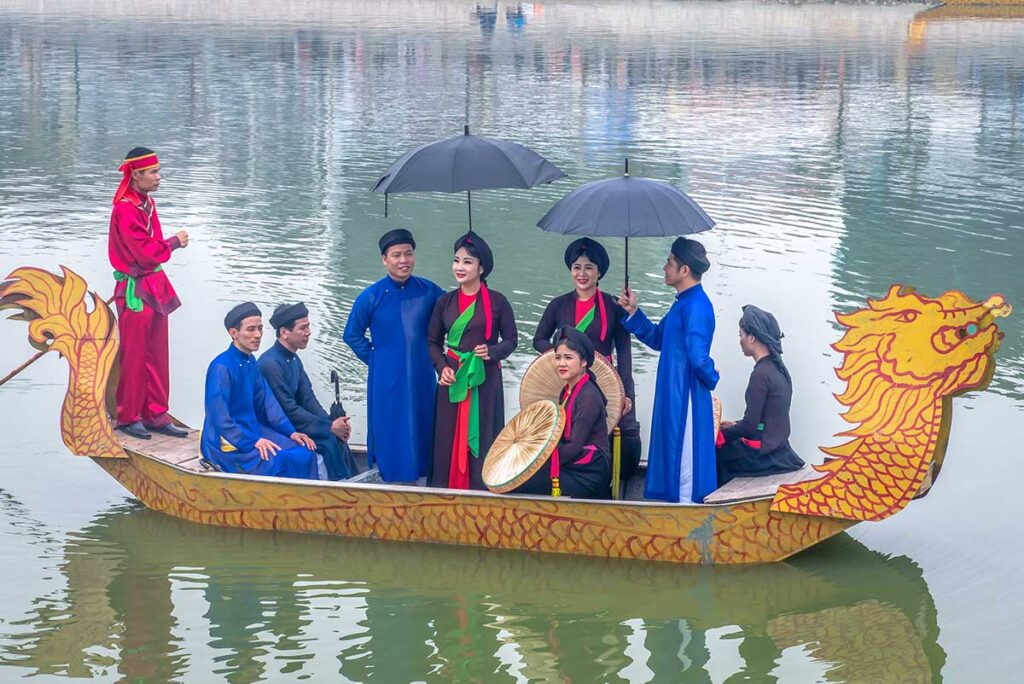
You’ll find Quan Ho singers performing:
- On Lim Hill
- In village courtyards
- At communal houses
- And even on boats on small ponds
The singers wear traditional outfits: men in long tunics with umbrellas, and women in ao tu than (a four-panel dress) with flat palm hats and colorful belts. The style of singing can be playful or emotional, depending on the song. It’s not a formal stage show, but rather something that happens naturally around the festival grounds.
2. Processions & Ritual Ceremonies
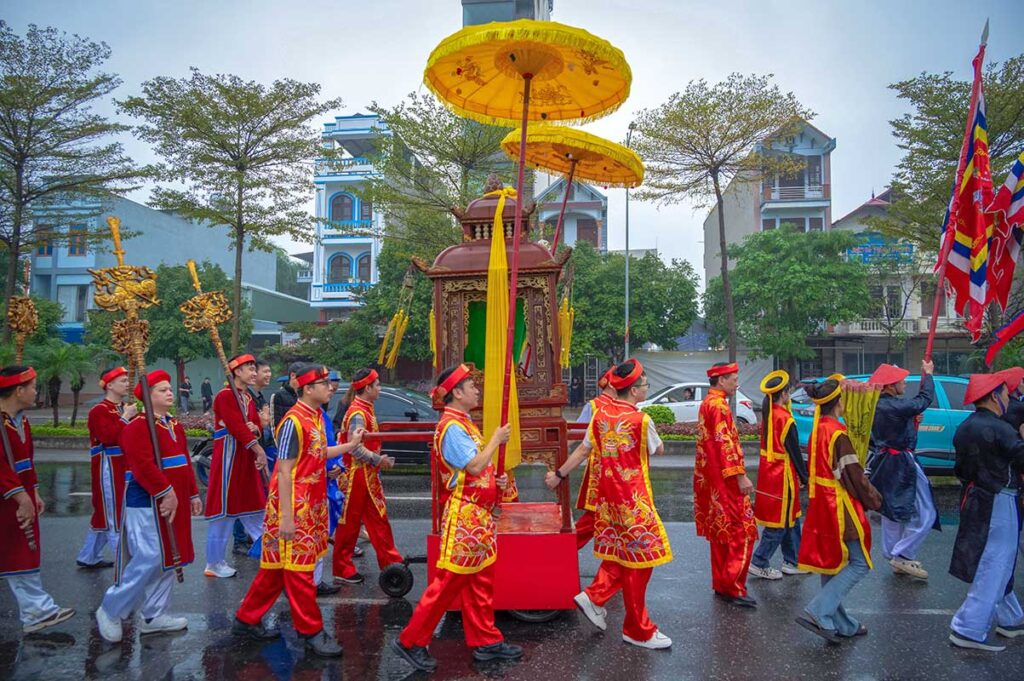
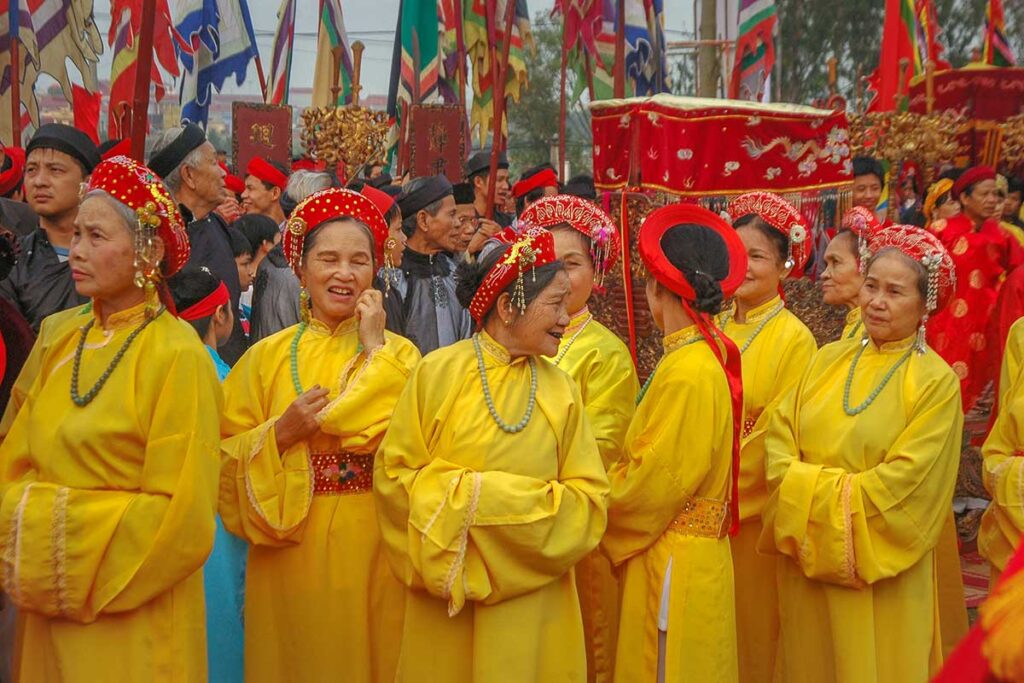
On the morning of the main festival day, you can see traditional processions climbing up Lim Hill. Local people dress in colorful ancient-style costumes, carry ceremonial flags, and bring offerings to Lim Pagoda, where incense is burned in honor of historical figures.
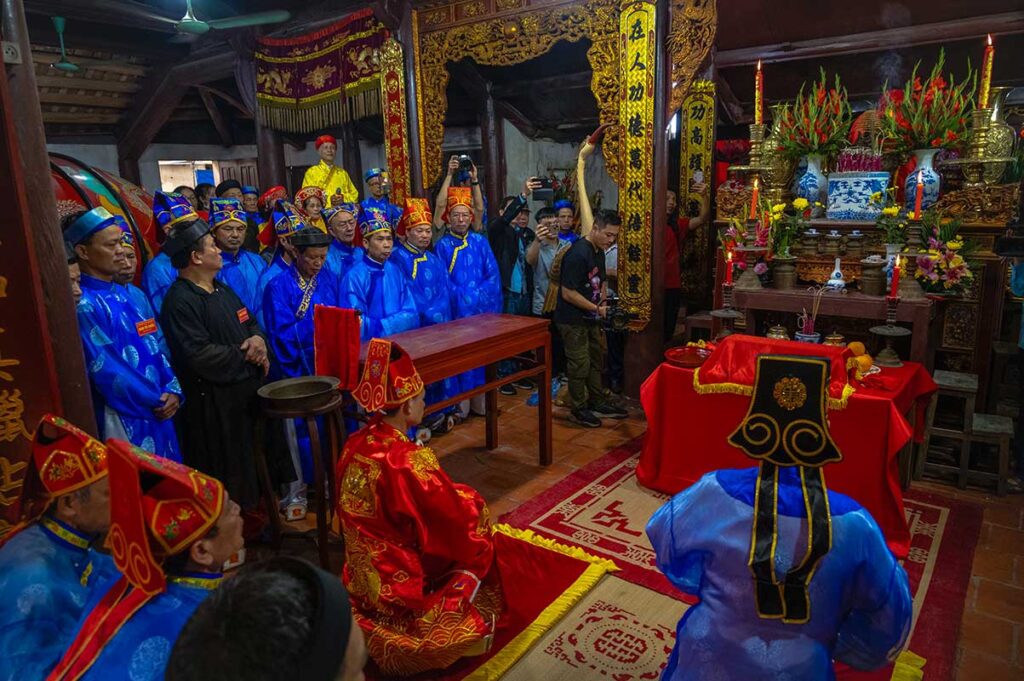
One of the main figures worshipped is Nguyen Dinh Dien, who helped organize and preserve the festival in the 18th century. There are also rituals at other temples nearby, often accompanied by drumming, chanting, and traditional music.
3. Traditional Folk Games
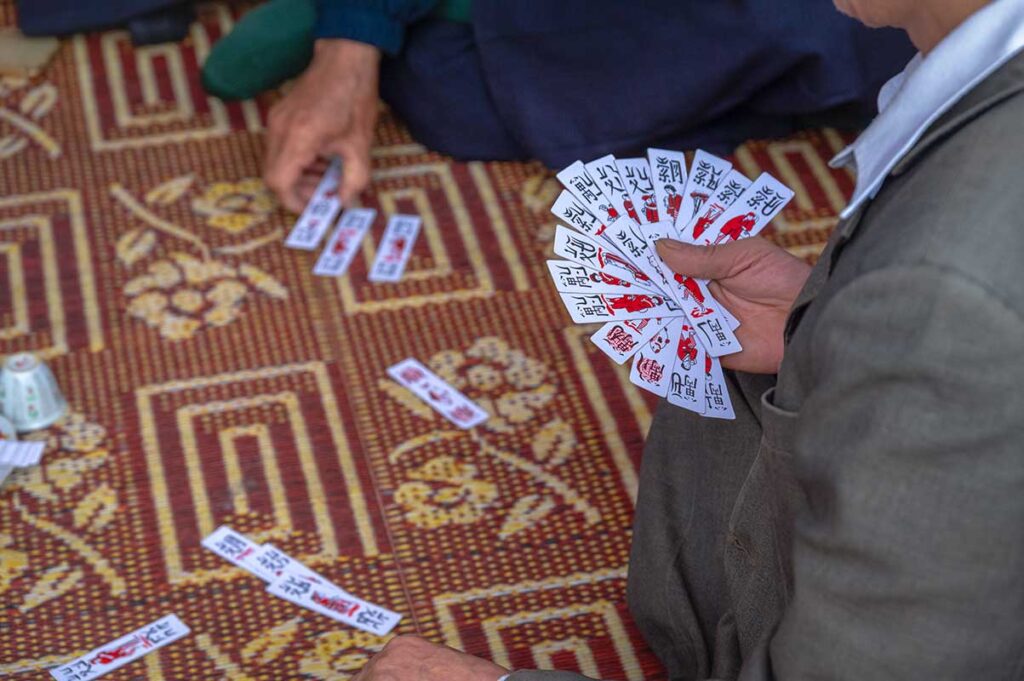
The Lim Festival includes a variety of folk games and contests, many of which are rarely seen outside rural festivals in Vietnam. These include:
- Human chess – where real people act as chess pieces on a giant board
- Bamboo swings – tall wooden swings where players show skill and balance
- Cockfighting and wrestling – competitive sports popular in the region
- Rice cooking contests, blindman’s buff, and tug of war
Some games are for fun and performance; others are real competitions between villages.
4. Cultural activities & Contests
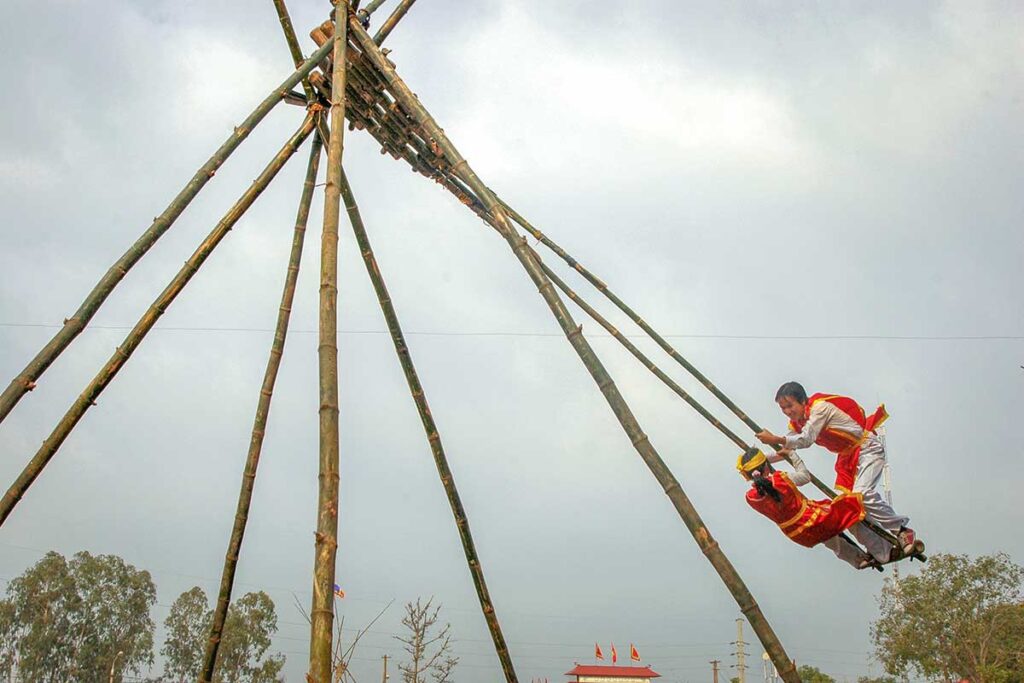
In addition to singing and games, there are several smaller cultural events:
- Weaving contests – young women from the Noi Due area weave fabric while singing Quan Ho songs
- Poetry readings and art performances – on small stages or at temples
- Martial arts demonstrations – often held in open courtyards
- Street stalls and traditional markets – selling food, crafts, and souvenirs like handmade flutes or fabric dolls
These activities give a broader look at the everyday life and cultural values of the people in Bac Ninh.
What to expect as a visitor
The Lim Festival is lively, crowded, and full of energy, especially on the main day (the 13th of the lunar month). It attracts thousands of Vietnamese visitors, many of whom come from nearby villages or provinces. For international travelers, it can be a fascinating experience — but also a bit overwhelming if you’re not prepared.
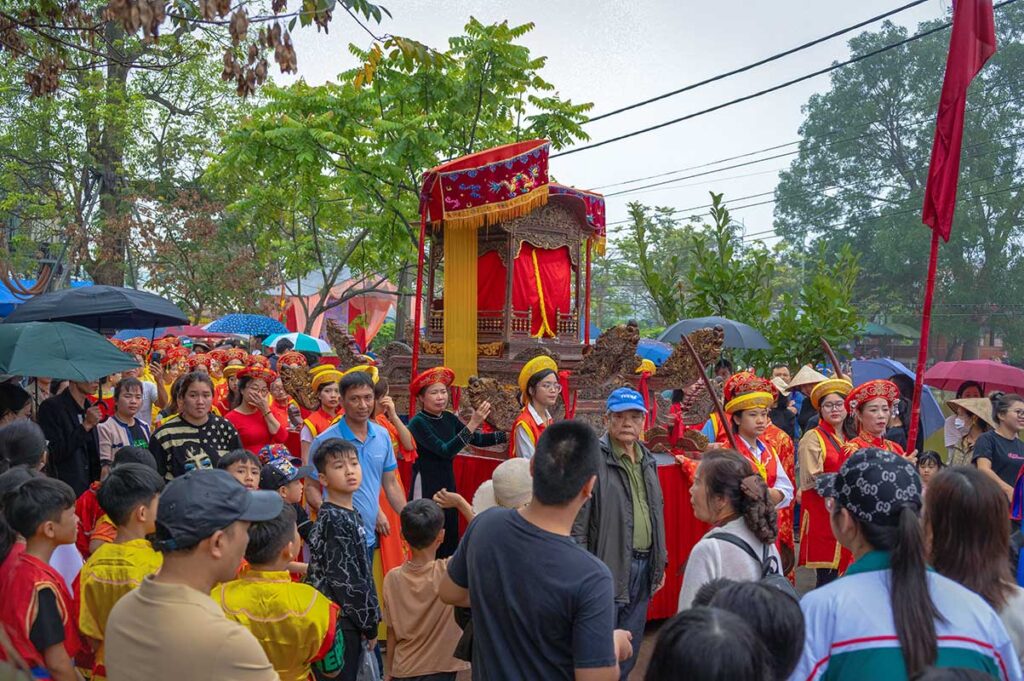
There are no formal stages or fixed schedules. Quan Ho singing, rituals, and games take place in different spots at the same time — on hillsides, in pagoda courtyards, and along village paths. You’ll need to walk around to find what’s happening, and things often feel spontaneous rather than organized.
Expect the following:
- Crowds: It gets very packed, especially from late morning to early afternoon. If you prefer fewer people and a calmer atmosphere, arrive early (before 9:00 AM).
- Noise and activity: Drums, loudspeakers, music, and cheering from game areas create a festive but sometimes chaotic environment.
- Limited tourist support: There’s very little English signage or explanation, and no tourist information booths. Going with a local friend or guide is helpful if you want to understand the singing or rituals.
- Basic conditions: Don’t expect clear directions, shaded seating, or modern facilities. Public toilets may be hard to find or very basic.
- No defined performance areas: Singing often happens naturally — in small groups, surrounded by people. You might suddenly come across a duet happening under a tree or in front of a temple.
For the right kind of traveler — someone who enjoys exploring local culture in an authentic setting — this can be a memorable day. Just be ready for a bit of confusion, a lot of walking, and a very local atmosphere.
How to get to Lim Festival
The Lim Festival takes place in Tien Du District, Bac Ninh Province, about 20 kilometers east of Hanoi. It’s close enough for a day trip, but travel can take longer than expected on the main festival day due to crowds and traffic.
From Hanoi
- By private car or tour
This is the easiest and most comfortable option, especially if you want flexibility and a local guide. Travel time is around 1–1.5 hours, depending on traffic. - By motorbike or self-drive
If you’re confident driving in Vietnam, you can follow Google Maps from Hanoi to Lim Hill. The ride takes about 1 hour, but roads can get busy near the festival area, and parking is limited. - By public bus + taxi
Take a regular bus from Hanoi to Bac Ninh City (from My Dinh or Gia Lam stations), then grab a taxi or a Grab to Lim Hill (about 8–10 km). It’s the cheapest option but takes more time and involves at least one transfer.
Festival Location & Entry
The main festival takes place at Lim Hill and nearby areas in Tien Du District.
- There is no entrance ticket to the festival itself — you can walk freely around most areas.
- Some games, performances, or parking zones may charge small local fees (usually under 20,000 VND).
- Be prepared for crowded roads and limited parking close to the site, especially on the 13th day of the lunar month.
Tips for visiting the Lim Festival
- Arrive early on the main day (13th lunar day) to avoid the worst crowds and find better viewing spots for performances.
- Dress for the weather and wear comfortable shoes — the entire festival takes place outdoors, and there’s a lot of walking involved.
- Bring cash — vendors, food stalls, and even parking attendants only accept Vietnamese dong, and there are no ATMs nearby.
- Plan your transport in advance — taxis and buses can be full or hard to find later in the day, especially for the return trip to Hanoi.
- Don’t expect tourist facilities — there’s little to no signage in English, no formal seating, and no set program or map.
- Go with the flow — things might seem unorganized, but that’s part of the charm. Wandering around, discovering performances, and watching local traditions in action is what makes it special.
Is the Lim Festival worth visiting?
If it’s your first time in Vietnam and you’re trying to fit in top highlights like Halong Bay, Ninh Binh, or Sapa, the Lim Festival is probably not essential. It’s not designed for tourists, and without context, it can feel overwhelming or hard to follow.
However, if you’ve already seen the major sights or are looking for something off the beaten path, the Lim Festival is a great opportunity to experience real Vietnamese culture. It’s lively, unpredictable, and full of tradition — especially interesting for travelers who enjoy folk music, local festivals, and immersive cultural experiences.
Just be prepared: it’s not polished or tourist-friendly, but if you’re open to something different, it can be a memorable day.
